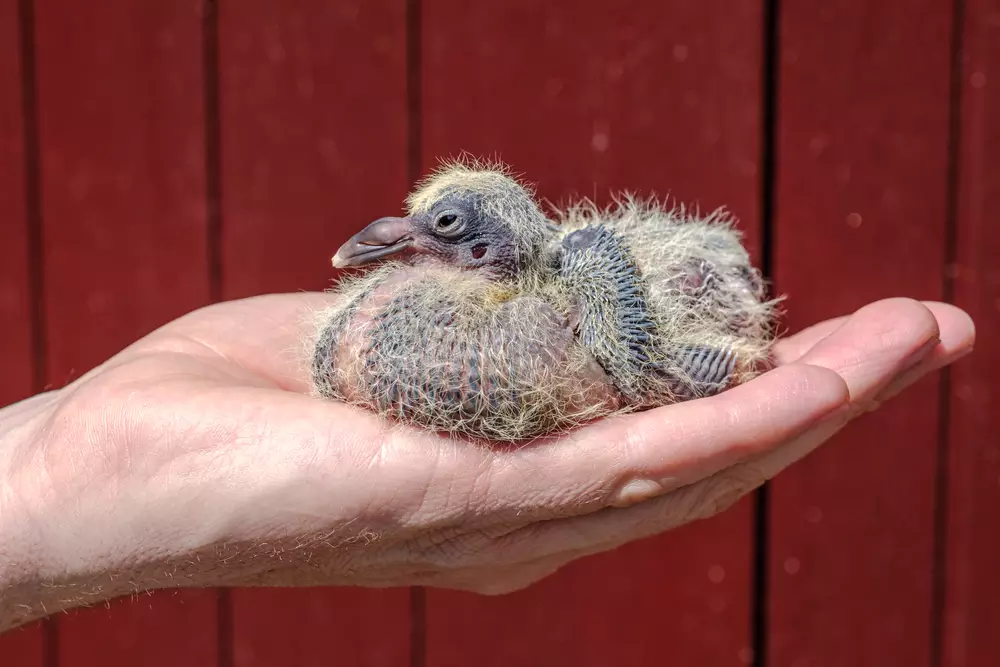There’s an undeniably enchanting aspect of pigeons that has captured the interest of countless individuals worldwide. Their gentle demeanors and ability to thrive in diverse environments make them a fascinating species. Pigeons, much like other birds, require delicate handling, particularly when we need to hold them.
Holding a pigeon, contrary to what you might initially believe, isn’t a complex task. Yet, it demands careful attention to detail and respect for the bird’s comfort and safety. Proper handling ensures stress-free interaction for both you and the pigeon while protecting the bird from potential injury.
Understanding pigeon behavior is a crucial part of holding them. Being aware of their responses and comfort levels enhances your interaction with these graceful birds. It also helps promote a more respectful and empathetic approach towards all animals.
Preparations Before Handling
Before you even consider approaching a pigeon, it’s crucial to prepare. In other words, setting the right environment is the first step. An overly noisy or bustling environment could stress the bird, so a calm, quiet setting is ideal. The space should also be safe and enclosed to prevent the pigeon from flying away and potentially getting hurt.
Wearing appropriate attire and accessories can also play a part in successful pigeon handling. Soft, smooth gloves can protect your hands and offer a comfortable perch for the pigeon. Avoid brightly colored or flashy clothing, as it may startle the bird.
The Approach Towards Pigeons
Your movements and speed can significantly impact how the pigeon perceives you. Slow, measured movements are crucial. Abrupt or quick actions could startle the pigeon, making it more difficult to hold them.
Maintaining a calm demeanor is equally important. Pigeons, like many animals, are adept at picking up on energy and tension. Your calmness can reassure them, making the handling process smoother.

Steps to Hold a Pigeon Correctly
Once you’re appropriately prepared, it’s time to hold the pigeon. The first step is to gently get a hold of the pigeon. It’s best to approach the bird from the side and then slowly move your hand towards it.
The right hand positioning involves gently holding the bird around its wings. However, make sure your grip isn’t too tight as it could hurt the pigeon or make it anxious.
Lifting the bird requires care as well. Slowly raise your hand, ensuring that the bird remains calm and comfortable throughout the process.
Do’s and Don’ts of Pigeon Handling
When it comes to handling pigeons, certain best practices can enhance the experience. For instance, ensuring that the bird feels secure in your hold without being squeezed or confined too tightly is essential. Remember, the goal is to create a comfortable environment for the pigeon.
Avoiding certain mistakes is equally critical. One major error to avoid is rushing the process. Patience is key when handling pigeons. Furthermore, never attempt to hold a pigeon if it seems overly stressed or anxious, as this could lead to injury.
Releasing a Pigeon Back Safely
After holding the pigeon, releasing it back safely is essential. When it comes to the right method of releasing, it involves gradually opening your hand and allowing the pigeon to fly off at its own pace.
Sometimes, the pigeon may resist leaving your hand. In this case, it’s essential to stay patient and wait for the bird to feel comfortable enough to fly away.
Frequently Asked Questions
Can Pigeons Cause Harm?
While pigeons are generally harmless, they can peck or flap their wings when frightened, which can potentially cause minor injuries. They might also carry certain diseases, which is why it’s important to wash your hands thoroughly after handling them.
What If the Pigeon Is Injured?
If the pigeon appears injured, it’s recommended to contact a local wildlife rehabilitator or veterinarian for guidance. You should handle an injured pigeon with extra care to avoid causing further harm.
Are There Legal Restrictions on Holding Pigeons?
In some areas, there might be laws against handling or keeping certain species of wild birds, including pigeons. It’s always best to check local regulations before interacting with wildlife.
Conclusion
Holding a pigeon involves much more than simply picking up the bird. It requires an understanding of the bird’s behavior, a carefully prepared environment, and gentle, patient handling techniques. But once mastered, it’s a skill that offers a unique and rewarding way to connect with these wonderful creatures.
At the heart of the entire process is a profound respect for the pigeon and a dedication to ensuring its safety and comfort. This commitment not only enhances our interaction with pigeons but also nurtures our appreciation for all forms of life.
Above all, pigeon handling exemplifies the human-animal bond’s beauty, showcasing the connection that can exist between different species when approached with kindness and understanding. Remember, it’s not about mastering the bird, but rather learning to understand and respect it.
